Description
Vinyl looks (visual inspection only) pretty new.
Sleeve: check all the photos and judge for yourself.
RiKardo Hammmond / Mr X Records (Cat: RDLP 101)
Pressed in 1988, this Dutch (?) bootleg is easy to spot as the front sleeve presents Prince as seen on U Got The Look 12″” maxi-single over a black background. “”Prince”” is printed in white “”Sign O’ The Times”” font, and underneath is written “”Black Album”” in a different white font.
The labels are white, with black lettering. The catalog number reads RDLP 101
———————————————————–
Prince – Black Album
Label: Not On Label (Prince) – RDLP 101
Format: Vinyl, LP, Unofficial Release, Album
Country: Netherlands
Released: 1988
Genre: Electronic, Funk / Soul, Rock
Style: Funk
Tracklist
A1 Le Grind 6:42
A2 Cindy C 6:14
A3 Dead On It 4:35
A4 When 2 R In Love 4:12
B1 Bob George 5:36
B2 Superfunkycalifragisexi 5:55
B3 2 Nigs United 4 West Compton 7:00
B4 Hard Rock In A Funny Place 4:30
Cover has a photo of Prince from the Sign Of The Times era in a fur coat, on a black background. Credited on the sleeve to Mr X Records. On the label the record is credited as by Rikardo Hammond.
Labels lists tracks as:
A1 Dance the Grind
A2 Song For Cindy
A3 On It
A4 Together In Love
B1 For George
B2 Funky Sex
B3 United For West
B4 Rock Hard And Funky
———————————————————
1987: Welcome to the Funk Bible
An album with no name
No album with this name was planned. No name of the artist could be found other than “”Somebody”” on Warner’s release schedule. Just a record with a production code printed in orange lettering on the spine of the black sleeve. Although the original title ‘Funk Bible”” was mentioned, buried in the mix, at the beginning of the first song “”Le Grind””, it was never used as record title and of course it was dubbed “”The Black Album”” because that’s what it is…
The history of this album appears to start at the end of the European leg of the Sign of The Times tour. Prince seemed to be frustrated about the weak sales figures of the Sign of The Times album and the accompanying criticism. Although he received positive reviews on the prolific double album some critics started to say that Prince had become too pop-oriented and had lost his ability to write good music.
October 1987: Prince starts to work on a new album.
This would become the Black Album a.k.a. Funk Bible. He records “When 2 R In Love” and updates some other songs, which date back from September 1986 to March 1987. The use of older songs is actually a funny move when you think about he motivation of this album. It doesn’t prove the point about his capabilities at that point but more of those in the past. But then most people knew little about Prince’s vault with songs. In the middle of November the album is finished and the tape is sent to Warner Brothers for mastering.
December 1987: recall
One week prior to the album’s release Prince reconsidered the project, cancelled it and recalled all copies for destruction. 500.000 copies where already pressed and waiting to be shipped out. By then many promotional copies where out in world (estimates state roughly hundred) which contents soon would serve as a basis for the most bootlegged album ever.
There was much speculation about the reason of cancellation. It was thought that Warner didn’t like the album for it’s tone and content. There was also the consensus that Warner objected to the fact that so much Prince music was made available to the public in so few years. They didn’t have enough time to stretch out the release of an album and cash-in accordingly.
It was all different though. Prince had pulled the plug himself.
Rumours of this recalled secret Prince album hit the streets and fans started to look for it. Very soon different, bad and incomplete copies circulated on tapes among collectors.
6 March 1988: the albums is aired.
A German DJ., Ruth Rockenschaub played the record in her nightly radio show Nachtrock.
This was repeated in the evening three days later in that station’s show Soul Train. The local division of Warner, WEA was not amused and sent out a telex to warn them that they would be fined DM12.500 when playing the record again. Other stations in Europe like Veronica’s Countdown Cafe in the Netherlands followed some weeks later.
Before the official release in 1994 copies could fetch crazy prices from $5.000 up to an alleged DM22.000/$12.000 at a shop in Hamburg, Germany, in the beginning of the 90’s. I also remember mention of the acetates being sold at one point (maybe it was the Hamburg sale or an unconnected US sale).
April 1988: The fact that Prince had himself cancelled the whole project became evident for the general public when the first single from the forthcoming album Lovesexy came out, and subsequently, the video going with it.
Aware of all bootlegging Prince addressed the fans a request not to buy the album, in a sequence of “”Alphabet St.””, video. Unfortunately it was done through a very hidden message, in a held up walking cane in a split second of the clip, so many missed it. The message being “”Please don’t buy The Black Album. I’m sorry.””.
July 1988: a tourbook story as explanation
Prince chose to cover the whole story his way during the LoveSexy Tour. Dead On It, Bob George & Superfunkycalifragisexy where played live in the Lust section of the show.
The LoveSexy tour programme contains a definitive explanation, written in a princely fashion, it told the story of Camille. This part explains a bit the reason behind the album:
Tuesday came. Blue Tuesday. His canvas full, and lying on the table, Camille mustered all the hate that he was able. Hate 4 the ones who ever doubted his game. Hate 4 the ones who ever doubted his name.
Tis nobody funkier — let the Black Album fly. Spooky Electric was talking, Camille started 2 cry. Tricked.
A fool he had been. In the lowest utmostest. He had allowed the dark side of him 2 create something evil.
2 Nigs United 4 West Compton. Camille and his ego. Bob George. Why? Spooky Electric must die.
It is notable that he actually sacrificed the character of Camille to tell this story and not himself as being Prince. Most songs on the Black Album didn’t relate to Camille at all. The songs for the also unreleased Camille album were different songs from the same recording sessions.
The “”real”” story behind the cancellation
This part has been confirmed by several people surrounding Prince but he only hinted at it so parts can be or just are speculative. Some years later stories started to emerge about Tuesday December 1st, 1987 and the preceding evening when Prince went to the club Ruperts. He asked the DJ to play the new album and observed the responses of the people in the club.
The same night he met Ingrid Chavez. She is a poet, singer, songwriter and nowadays wife of singer David Sylvian. The two went to Paisley Park and had an intense conversation. Apparently Prince already had some doubts about releasing the album. Somewhere that night he decided against it’s release. The decision appeared to be made after experiencing some heavy hallucinations when using the drug Ecstasy. In what he has called a vision the letter G O D were hovering over a field. It made him realise that it was his responsibility not to release this dark and negative album to kids. He also didn’t want this album to be his legacy in case he died after the release.
1991: This chair goes round and round
In the next years there where often plans to release The Black Album. In 1991 it was suggested to be released as extra disc together with a greatest hits compilation as a means to compensate for badly selling Graffiti Bridge album. The idea was to sell older songs instead of over saturation of the market. Maybe that was the reason to abandon this altogether and shelve the record again.
1994: Manage rock stars
22 November 1994, The Black Album is officially released
But for a limited time. For many people it’s release came out of the blue. No one knew that a month before, on 25th of October, Warner was negotiating a $4 million deal with Prince about the release of three albums. Which were The Black Album, The Gold Experience and a soundtrack for a yet to be determined Warner Brothers film. The deal fell through but the release of The Black Album was saved by a $1 million check that went into Prince’s direction.
At it’s release Prince stated that he spiritually was against the album. Some fans were pleased that the album was released but also didn’t understand the contradiction between his spiritual remark and the fact of the fat cheque. They felt that Prince could have blocked the release if he really wanted to. It became very clear that Prince’s wanted to get rid of the Warner’s contract that held him back. With this release he fulfilled one album of the four that he still had to release.
The promotion around the release was very low key. At the release date people at Warner’s dimmed the light for 15 minutes and were dressed in black. There also was a tongue-in-cheek promotion going on which stated that the first 1.000 fans who brought in their bootleg copy would receive a real copy in exchange. No singles were released. Only a promotional video was made of When 2 R In Love which was all black and showed only the lyrics of the song.
Sales were much less than expected and the album dwindled fast out charts. It was to late. In 1987 it was raw, provocative and daring but seven years later looked tame and pale against the aggressive tone of the music of that day. It was just overtaken by gangsta-rap, grunge and hardcore punk.
At this moment the album is out of print.
Content
Tracklisting
On all records that go around these 8 songs appear in this order (4 on each side, exception being the 1987 US DJ promo where the songs are divided by 2 over 4 sides.
Side A
1. LE GRIND (6:42)
2. CINDY C. (6:12)
3. DEAD ON IT (4:35)
4. WHEN 2 R IN LOVE (4:12)
Side B
5. BOB GEORGE (5:36)
6. SUPERFUNKYCALIFRAGISEXY (5:55)
7. 2 NIGS UNITED 4 WEST COMPTON (7:00)
8. ROCKHARD IN A FUNKY PLACE (4:30)
5.0 out of 5 stars Legendary and controversial album by Prince
What is there to say about the Black Album that hasn’t already been said. This album was supposed to be the follow-up to the 1987 masterpiece Sign o’ The Times. The album was made but weeks before it’s release Prince refused to put it out there and went to work on another album. The album released instead was Lovesexy, which (if you’ve heard the Black Album) proves to be great in its own way but the exact opposite of the Black Album. For Prince this was a spiritual thing. He said that something told him not to put out the Black Album. But what Prince didn’t know is that while WB destroyed most copies, some of the promotional LPs were sent out. That’s when the bootlegging began. The Black Album was one of the most bootlegged albums in history. The Black Album was still alive when Prince began performing some songs on stage during his Lovesexy Tour.
Years went by and in 1994 Prince had to fulfil his contract with WB and did something he didn’t want to do back in ’88. Release the Black Album to the mass public. For years he’d been warning people not to buy the Black Album and now it was available but with a catch, it was limited. The Black Album’s shocking lyrics and overt sexuality threw many people off. Here was the guy that sang “”Little Red Corvette”” talking in this pimped out voice calling a woman something besides her name. But even with all the controversy it was well praised.
Prince’s The Black Album is an all out funk fest. With jams like “”Le Grind””, “”Cindy C.”” and “”Superfunkycalifragisexy””. The only ballad on the album that was also featured on Lovesexy, “”When 2 R In Love”” is great and among the greatest Prince songs. “”Dead On It”” is a cool parody of rappers with an addictive yet simple beat that’s sure to having you bobbing your head. “”2 Nigs United 4 West Compton”” is mostly an instrumental but has a little intro at beginning that has a conversation between Prince and Cat behind the drums of his song “”Housequake””. But listen closely and you’ll hear a slew of voices chattering spewing curse words and conversations of their own. “”Rockhard In A Funky Place”” is a cool song too, with Prince ripping the guitar while Shiela, Cat and anothers yell “”Rock!””. But the infamous and controversial “”Bob George”” takes the crown for the best cut on the album. It is Prince in rare form. A deep voice and a pimp attitude. He’s even making suggestions to using a gun, something that shocked critics and even made them come to the conclusion that Prince pioneered “”gangsta rap””.
To those that love Purple Rain and the legendary status of the man will find this album and “”Bob George”” in particular somewhat different and very disturbing. But to those that can enjoy Lovesexy and all of his work that the albums that weren’t lighting up the pop charts, this is a masterpiece. Enough said.
5.0 out of 5 stars A CLASSIC THAT WAS OVERHYPED THEN, AND UNDERRATED NOW
This album could have been titled “”Controversy,”” mainly because most Prince fans seem to be unable to agree on whether or not it is a good disc. I side with the camp that sees this as a Prince classic. As the intended follow-up to the vaunted Sign ‘o’ the Times, 1987’s Black Album comes straight out of one Prince’s most inspired periods. Although the brilliant patchwork of Sign ‘o’ the Times ultimately yields the finer album, Black Album is Prince’s ode to funk, and, as such, is more cohesive, much more of a piece with itself. It is also much more focused and enjoyable than Lovesexy, the album Prince released in place of Black Album, in 1988. Whereas on Lovesexy, Prince obscures his funk with swirls of quasi-religious philosophizing, on Black Album he stays true to one vision: getting it on to the groove.
Here, the Purple One conjures an unrelenting world of joyously insane, black-strap, butt-bumping, booty-grinding funk that struts in with “”Le Grind”” and doesn’t let up until “”Rock Hard in a Funky Place”” swaggers off into silence. On every track in between, Prince keeps up the pace, refusing to let listeners catch their breath. (One exception to this is the only ballad on the disc, “”When 2 R in Love,”” the one Black Album track to make it onto Lovesexy, where it makes much more sense thematically. On Black Album, it simply doesn’t fit in, and is the album’s one weakness.) This is not listener-friendly Prince; he is much too hardcore here for casual fans, which could explain why this disc still gets mixed reviews. However, for those who revel in this artist’s unique, inspired forays into the fun and unusual, Black Album is just the ticket.
* * *
Officially, this album was not released until 1994, when Warner Bros. put out a limited edition CD. Prior to that, it had been available only on bootleg LPs and cassettes. To my knowledge, this album is now out of print officially, and all forms of it will take some work to find. If you can track down a copy, either official or bootleg, snap it up. It’s worth it.














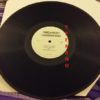
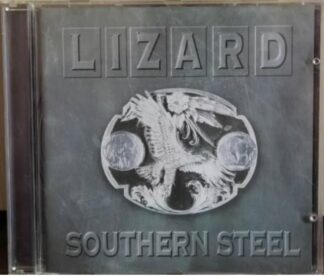
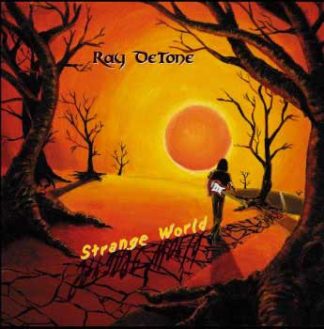
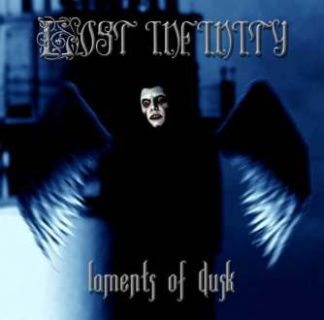
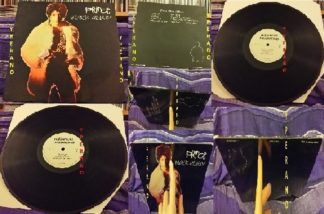


Reviews
There are no reviews yet.